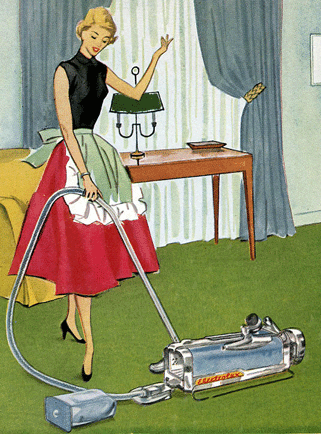|
Thread Number: 12132
Royal Serial # Guide (After 1970) |
[Down to Last] |  |
Post# 129990 3/30/2011 at 23:32 (4,867 days old) by KirbyClassicIII  (Milwaukie, Oregon) (Milwaukie, Oregon) |
||

Hi,
This is a reference guide to how the Royal serial numbering system works on their post-1970 metal uprights and canisters/tanks, and 1976 and later Prince hand vacuums. Bookmark this link for future reference. Example of serial number, 1970-1984: 67L-C-02854 (taken from a model 880 upright) "67L" is the date of manufacture, which breaks down as: 6 = the calendar year of manufacture - 1976 7 = the decade of the calendar year of manufacture - 1970s L = the calendar month of manufacture - November During the 1970-1984 period, the month code rules skipped the letter "I" (for September) to avoid confusion with the number "1," which would also mean "M" is used to indicate the month of December. To make things clear: A=January, B=February, C=March, D=April, E=May, F=June, G=July, H=August, J=September, K=October, L=November and M=December. After 1977, this part of the serial # was changed slightly so that a calendar year code such as "78" becomes the actual calendar year of manufacture (example: 78F-C-124046, from a model 801 upright, where "78F" indicates a June 1978 manufacture date). Then, in September 1978, the month letter code was placed first, so that we see "J78" as September 1978 instead of "78J." The "C" after the date manufacture code indicates the line and shift the vacuum came from. The "02854" is the general production sequence number. If production started from serial 1001, this example would indicate the 1,854th 880 to come off the assembly line. Note that this part of the serial number can reset back to 1001 (or however low) at a certain point in production. Between January 1985 and December 1994, a serial # was formatted like this: C85F066639 (this example was taken from a model 608 upright). Again, it breaks down as: C = the calendar month the vacuum was manufactured - March 85 = the calendar year the vacuum was manufactured - 1985 F = the line and shift the vacuum came from 066639 = the general production sequence number The month code rule was revised so that the letter "I" was used to denote the month of September, rather than "J" which according to these rules would mean October. Thus: A=January, B=February, C=March, D=April, E=May, F=June, G=July, H=August, I=September, J=October, K=November and L=December. From 1995 to the present day, a Royal serial # looked like this: I95A-00001001 (where "I95" is September 1995). Again, the 1985 rules apply to this format. Try these examples (no cheating): 07J-N-01273 78D-C-13708 C79-B-03708 E85A005129 ~Ben | ||
| Post# 129992 , Reply# 1 3/30/2011 at 23:43 (4,867 days old) by HooverCelebrity (Germany) | ||
|
That's really cool that you know this, Ben... How did you come into this knowledge? Royal dealer? The company? Spec sheets, etc?? Did you figure it out? ~F | ||
Post# 129993 , Reply# 2 3/30/2011 at 23:49 (4,867 days old) by KirbyClassicIII  (Milwaukie, Oregon) (Milwaukie, Oregon) |
||

Fred,
It is like trying to find out how old the engine powering a piece of garden equipment is (you know, engines made by the likes of Tecumseh and Briggs & Stratton). These serial #s are off of the nameplates of the 1970-up Royal metal uprights/canister/tanks and the 1976-up Prince hand vacs. Thus, I would like to know how old your red Royal 231 canister is. I know it is a pre-1976 model judging by the fact there is no crown logo on the "Royal" decal, and the obvious fact the cleaner body is red instead of medium blue. ~Ben | ||

 Comes to the Rescue!
Comes to the Rescue!